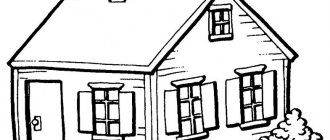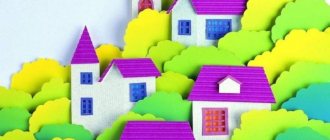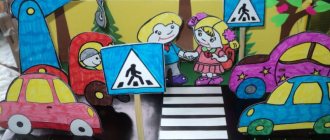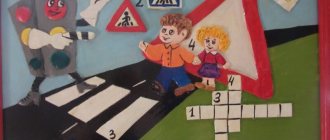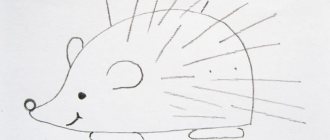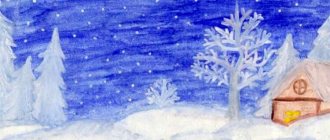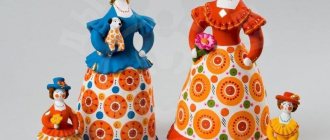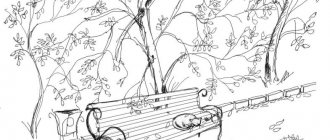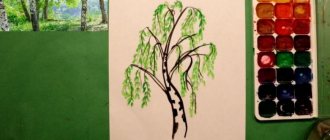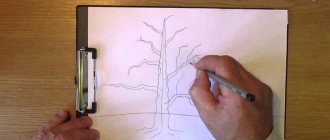Representatives of the bird world are found in nature in an amazing variety, they symbolize the sky, freedom, life and abundance. Sketches of birds often appear in children's albums.
Drawing birds is not only exciting, but also educational, because children get acquainted with forest, domestic and exotic species.
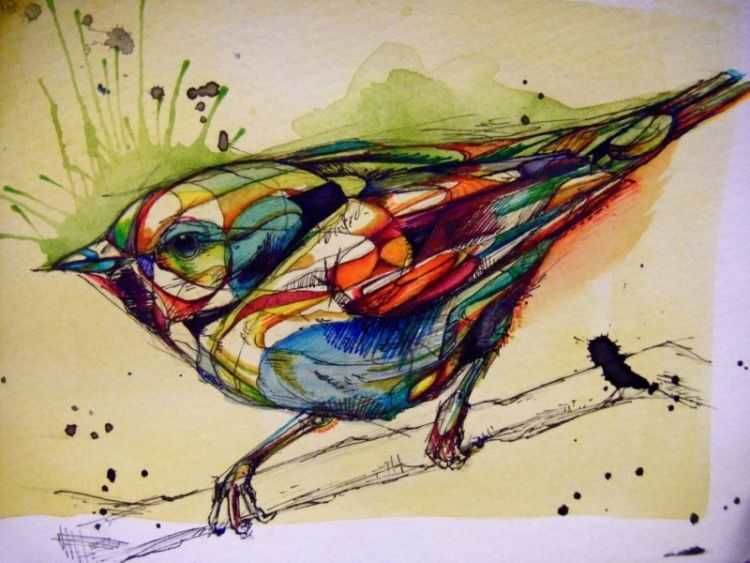
Parents should tell their child about their value to the natural environment, their anatomical structure and differences, sometimes even watching the winged singers from the window and feeding them in the winter.
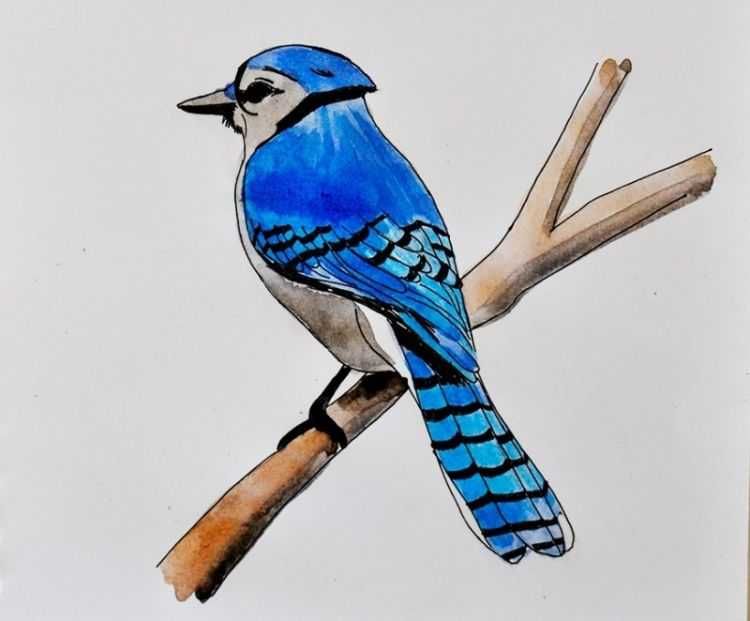
Bird body structure
Beginning artists will understand how easy it is to draw a bird if they better learn the techniques and basic rules.
- — All birds have a streamlined shape. This shape is necessary for flight.
- — The skeletal structure of birds is the same. Only the length and size of the individual parts change.
- “The feathers overlap each other like tiles on a roof.” The overlap begins along the front of the crown, then goes down the back to the tail.
- — The structure of the wing corresponds to the structure of the human upper limb, i.e. shoulder, forearm and wrist. The “brush” is the place where the first flight feathers begin to grow.
- — Birds’ knees are almost invisible. It is often covered with feathers.
- — Bird paws are arranged as follows: three fingers point forward and one back.
Lifestyle
When studying the bird fauna of any area, one can note the variability of its composition at different times of the year. In fact, very few birds live with us both winter and summer. This is largely due to seasonal changes in the lives of birds. In this regard, according to their lifestyle, all birds can be divided into three groups: sedentary, nomadic and migratory.
After winter comes a revival in nature. With the arrival of spring, significant changes occur in the lives of birds. Migratory birds return from wintering grounds.
For life, birds choose areas with favorable conditions, organizing nesting in the same place year after year. Here the male begins to sing, luring the female, and notifying others that the place is occupied. Birds, when choosing their life partners, attach great importance to the color of their plumage. Therefore, males have brighter colors to attract females.
Many people choose a pair for one season. However, birds are known in which pairs form for a long period or for life. For example, storks, herons, swans and birds of prey.
After the pair is formed, a crucial period begins. In the life of birds, spring is the time for breeding, and then caring for the offspring. To do this, they begin nest-building, laying eggs and raising chicks.

Caring for offspring: a penguin protects a chick from a petrel
In wildlife you can observe very interesting moments from the life of birds. For example, bird markets are of great interest. A striking example of such social life is the mass nesting of birds in the north. Birds live in a colony and work together to protect their young from predators. Such collective life makes it possible to preserve offspring, protect themselves from predators, and thereby increase the life expectancy of birds.
Bird market in Kamchatka
After spring and summer come the first cold days. The life of animals and birds in the fall is aimed at preparing for the winter cold. Birds that cannot find food in the cold fly away to warm countries. It is generally believed that birds fly south. Bird ringing has shown that many of them fly to the west and southwest. The autumn flight of birds is extended over time. It lasts about three months.
The first snowfall in autumn causes anxiety among birds. The first changes in the way of life of birds are taking place. Sedentary birds switch to coarse, low-nutrient woody food - buds, shoots and needles. Many birds migrate for the winter closer to populated areas. Nomadic birds begin to appear.
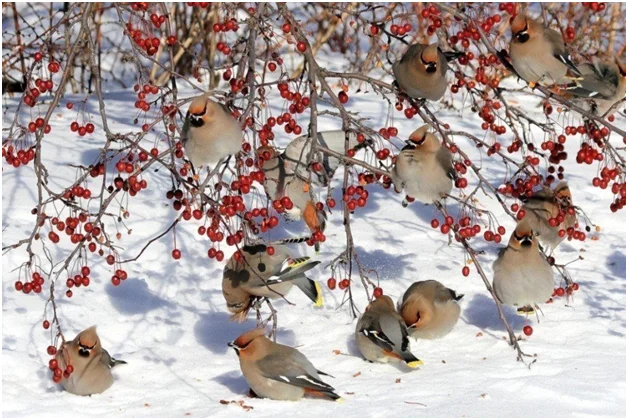
Nomadic birds - waxwings
It is difficult for all living things in this harsh season of the year. The cold hinders the movements of birds. Lack of food and death of forest inhabitants are often observed. It is within our power to take care of our feathered friends and organize feeding. It’s not difficult to make a simple feeder and hang it out the window in the yard, garden or park. We will save many birds from hunger and help them survive until the first warm days of spring.
Sparrows and tits at the feeder
Birds will not remain in debt, because they bring great benefits to humans. The positive significance of birds in human life lies in the destruction of insects and rodents - agricultural pests. Such useful birds include all insectivores, such as tits, nuthatches and others. It is impossible not to say about woodpeckers, which eat harmful insects: bark beetles, click beetles, golden beetles, etc.
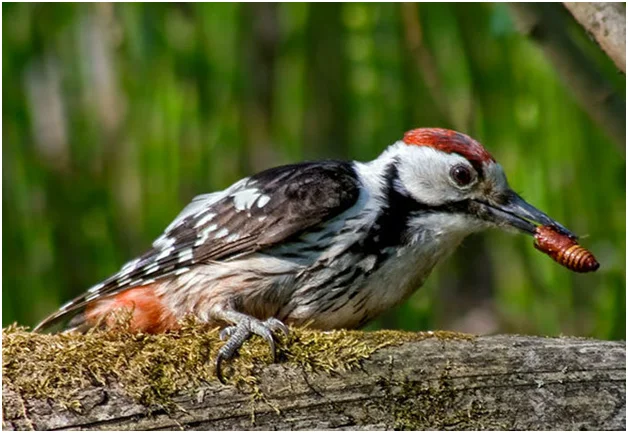
White-backed Woodpecker
Owls and owls are considered energetic hunters of mouse-like rodents. Birds of prey also destroy mice: buzzard, kestrel, harrier, etc.
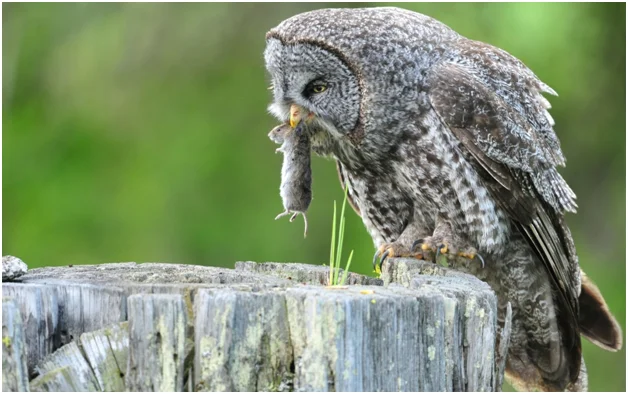
Gray owl with prey
Birds are of great economic and commercial importance. Some birds provide tasty meat (hazel grouse, black grouse, wood grouse, ducks, etc.), while other birds provide valuable feathers (eiders, loons, geese).
Representatives of the chicken and anseriformes orders are domesticated. Poultry farming is a large livestock industry that supplies food.
Poultry meat is very nutritious and tasty. Chicken eggs are a valuable food product.

Chickens at a poultry farm
The importance of birds in nature is also very significant. Birds, as already mentioned, regulate the number of living organisms. Sometimes birds themselves serve as food for other animals, being a link in the food chain.
Without these animals, the seeds of many plants would not be distributed over significant distances. Pecking at various berries, they throw out intact seeds with droppings, often far from the place where they grew.
Sketching
Sketches are essential for beginning artists. Just a few strokes allow you to determine the movement and outline of the bird. There is no need to be afraid of imperfect sketches, because their purpose is to prepare the ground for further detailed elaboration.

Each person who undertakes to draw birds must use different possibilities. The first step is to study the drawn pictures of birds. They help to understand the structure of the feather, to anticipate how light and shadow are distributed.
Digestive system
The high metabolism of birds is supported by a digestive system of a specific structure. Food captured by the beak travels through the esophagus into the crop, where it swells and begins to be digested.
The anterior section of the stomach is glandular, where the chemical breakdown of nutrients takes place; in the second section, the muscular section, mechanical grinding of food masses takes place. Afterwards come the duodenum and small and large intestine, which opens into the cloaca, along with the ducts of the excretory and reproductive systems.
Digestive enzymes are synthesized by the pancreas and liver.
The most peaceful bird. Drawing of a dove with a simple pencil
Using the example of a dove, you can consider how to draw a bird with a pencil.
This bird was not chosen by chance. The dove is depicted in school wall newspapers dedicated to Victory Day and May 1st. He is a symbol of peace and happiness. Newlyweds use this bird as decoration.
- The drawing begins by creating a basic outline that includes the wings, head, and torso. The head is outlined. An inclined line is drawn from it - the body (if the pigeon is flying, its tail is lowered down). The wings are indicated by a “tick”.
- The outline of the tail and the outline of the entire body are drawn. The paws will be in the form of short lines.
- The visible eye and beak of the bird are drawn.
- The contours of the plumage are outlined - on the wings and tail.
- The legs are drawn.
- The wings are divided into segments - this makes it easier to draw feathers.
Flamingo from bottles
To make this product you need large plastic bottles (5 and 10 liters), a polymer pipe about two meters long, a corrugated pipe about sixty centimeters long, acrylic, wire, foam.
The base body is made from the largest bottle. In its bottom you need to cut 2 holes according to the diameter of the polymer tubes (future legs). Feathers are cut from smaller five-liter bottles and attached to slits in the body.
A neck is made from a corrugated pipe, which is inserted into the neck of a ten-liter bottle. The head is cut out of foam plastic. Eyes are drawn with a felt-tip pen and a black plastic beak is attached. It is better to start attaching the feathers from the very bottom to the mesh.

Rainbow bird. Drawing of a parrot with felt-tip pens
Step-by-step instructions for beginning artists will help you, step by step, to depict a bird that has absorbed the entire palette of colors.
- Two ovals are drawn with a simple pencil. The smaller upper oval is the head. The bottom one will be larger - this is the torso.
- Four stripes are drawn down from the large oval. This is the future tail.
- Wings are added. One is depicted on top of the oval (body) in the form of a large drop. The second, partially visible wing is drawn in the form of half a drop.
- The beak is drawn. It looks like a triangle with a curved top.
- The general image of the parrot is clarified. Auxiliary lines can be erased at this stage.
- You should “plant” the parrot on a branch. The branch is depicted as a wavy line. Paws in the form of small ovals on top of the branch. In this position they look like a human fist. The claws are being drawn in.
- The eye is drawn. A parrot's eye looks like several circles nested inside each other.
- The tail is detailed - the lines turn into pointed ovals.
- Now you can color the bird.
The Macaw parrot is most often red. The beak is yellow. You can add orange to the wings. And put rainbow colors on your tail! The last circle of the eye is painted over with black and a spot is left for highlight (the remaining circles are not painted).
Birdhouses made from milk bottles
Don’t rush to throw away milk bottles and Kinder surprise containers, because you can make an attractive craft out of them. Round holes are cut in milk bottles, clothespins are glued to the bottom of the bottles, and the birds themselves are on them in the form of kinder boxes. Just decorate the birds' bodies with down or feathers, colored paper, and also draw eyes on them with a felt-tip pen, then the craft will be completely ready.
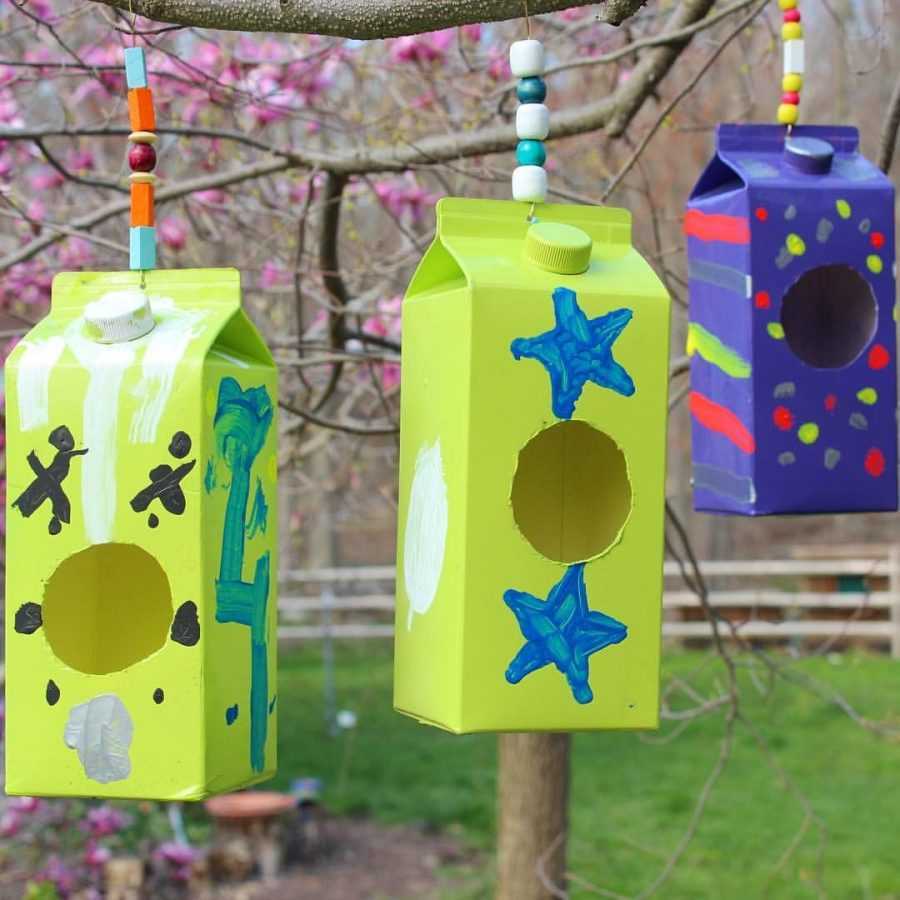
Summer bird. Drawing of a swallow with colored pencils
Swallows have been familiar to everyone since childhood. They build nests on country verandas and balconies of high-rise buildings. Probably many people have seen their chicks.
With the help of step-by-step instructions on how to draw a bird, the task will not seem difficult.
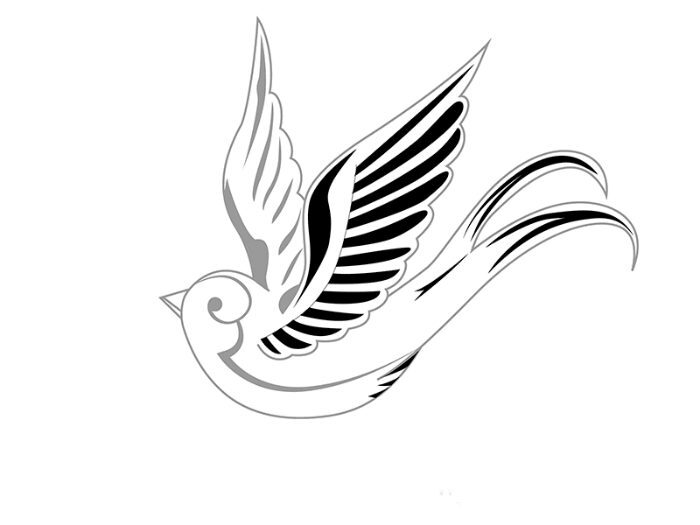
The main part of the swallow's body is no different from other birds. But the ponytail has a characteristic cut in the middle. The wings are also different - they are sharp and curved.
- Drawing begins with an image of a circle of the head. From the head, a body with a tail is drawn, reminiscent of a waving flag.
- The line indicates the division of the body into white and black. The bird's belly and part of its head are white.
- The unfolded wings are depicted in the shape of a sickle.
- A triangle is drawn - a beak and a black eye.
- The wings are being worked on - the plumage is indicated.
- In order to color a swallow, just a few pencils are enough: yellow for the beak, red for the color of the plumage in the lower part of the head, black for the rest of the part (except for the white part indicated by the border).

Small breeds
Sparrows are the most common family; their oval body is equipped with a round head and a triangle-beak. Draw the wing, eye and thin legs. An interesting titmouse with a round yellow belly.
The smallest bird is the hummingbird, which is distinguished by its long nose, thickened at the base, with which it drinks nectar from flower buds; it has also earned fame for its ability to fly backwards. The picture will turn out believable if you carefully work out the feathers of the birds.
Night-bird. Drawing of an owl for the little ones
Children love to draw fairy-tale characters. This character is found in many cartoons, fairy tales, and educational programs. Probably every kid knows Aunt Owl from Winnie the Pooh.
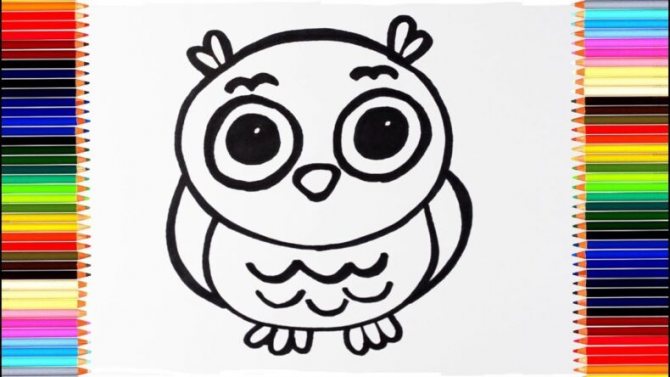
- A large oval is drawn with a thin marker.
- Two large circles are drawn at the top of the oval - eyes. The owl is notable for the size of its eyes.
- In the middle of the circles, dots are drawn - pupils.
- The beak is depicted as a triangle.
- Ears are also drawn in the form of triangles. Tassels are added at the tips of the ears.
- The wings on the sides of the oval are in the form of droplets.
- The paws look like two branches with “fingers”.
- You can imitate plumage with waves all over the body or with many inverted “birds”.
- The body is colored with a pair of brown markers and the eyes with yellow.
This method is suitable for little ones. After all, all geometric shapes in the image of an owl are repeated.
The diversity of the class of birds is amazing material for a beginning artist. You can take your first steps into the wonderful world of birds!
Propulsion system
Birds' muscles allow them to perform complex movements with a high degree of coordination. The organs of movement of flying birds are wings.
The pectoral muscles are the most developed (up to 1/5 of the total body weight).
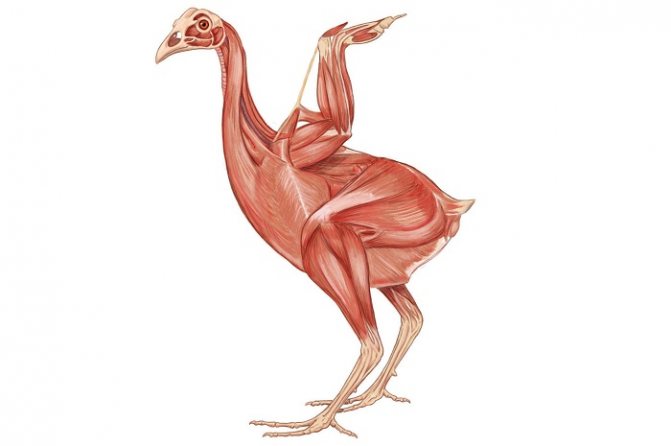
Birds that have lost the ability to fly have powerful leg muscles that allow them to run quickly on the ground.
Photo of a painted bird

Respiratory system
The ability to fly was determined by the special structure of the respiratory system. The lungs are spongy and consist of alveoli intertwined with capillaries.
Some bronchi, without dividing into bronchioles, extend beyond the lungs and form air sacs in the body cavity. These formations provide breathing during flight.
Air enters the bags when the wings rise in flight, and when lowered, it is squeezed out into the lungs.
Circulatory system
In representatives of the class of birds, a separation of arterial and venous circulations appears for the first time.
The heart has four chambers, so venous and arterial blood pass through it without mixing. The consequence of separation is intense gas exchange and constant body temperature, that is, warm-bloodedness.
